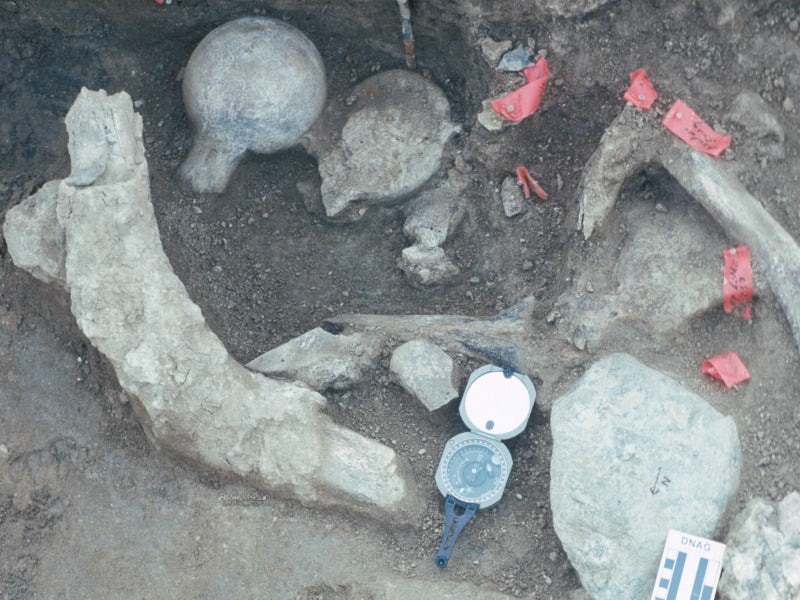When did humans arrive in America? It’s been a hot topic in scientific circles for the last 20 years or so, pegged anywhere from 13,500 to 16,500 years ago. Now new research from the Cerutti Mastodon Discovery, an archeological site in Southern California, blows those estimates away by suggesting early hominids arrived on the continent as early as 130,000 years ago. To give some perspective, it’s believed humans migrated out of Africa 125,000 years ago at the earliest.
The crux of the argument by the scientists, led by the San Diego Natural History Museum, stems from the sharply broken bones, tusks and molars of a mastodon found at a paleontological site first discovered in 1992 as a result of a freeway expansion. Also found buried at the site were large stones which appeared to be used as hammers and anvils. Further research showed that the bones were broken while still fresh by blows from the hammer stones that appeared strategically aimed to get at any marrow inside. With such evidence of human activity, the site suddenly became an archeological dig.
Mastodon bones and tusks found next to what are believed to be stone hammers used by early humans.
At the time of the find, dating techniques weren’t sophisticated enough to reliably assign an age to the bones, and by association, the tool-users who acted upon them. State-of-the-art radiometric dating equipment was used in 2014, however, to determine a more reliable and definitive age of the mastodon bones of around 130,000 years old, give or take 9,400 years. At the same time, experts studying microscopic damage to the bones and rock determined it was indeed consistent with human activity.
The researchers even went so far as to conduct experiments on the bones of large mammals, including elephants, to study breakage patterns and determine how such fractures could be made by early humans. They discovered that a blow from a hammer stone on a fresh elephant limb produced the same patterns of breakage as on the mastodon bones found at the site.
The results of all of this research has now been published in the journal Nature.
“This discovery is rewriting our understanding of when humans reached the New World,” said Judy Gradwohl, president and chief executive officer of the San Diego Natural History Museum. “The evidence we found at this site indicates that some hominin species was living in North America 115,000 years earlier than previously thought. This raises intriguing questions about how these early humans arrived here and who they were.”
For decades, the prevailing theory for human migration to America was via the Beringia land bridge over the Bering Strait from Siberia, dating to around 13,500 years ago. Later discoveries challenged that idea, pushing the arrival of humans back by several millennia. The discovery of the scientists at the Cerutti Mastodon site opens up more questions than it answers, starting with who these early hominins were, how they got here, and what happened to them.
“When we first discovered the site, there was strong physical evidence that placed humans alongside extinct Ice Age megafauna,” said Tom Deméré, curator of paleontology and director of PaleoServices at the San Diego Natural History Museum, as well as an author on the paper. “This was significant in and of itself and a ‘first’ in San Diego County. Since the original discovery, dating technology has advanced to enable us to confirm with further certainty that early humans were here much earlier than commonly accepted.”
Source: San Diego Natural History Museum
(For the source of this, and similarly important articles, please visit: https://newatlas.com/early-humans-arrive-america/49243/)










